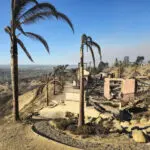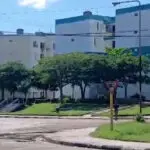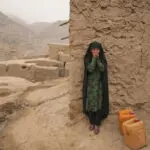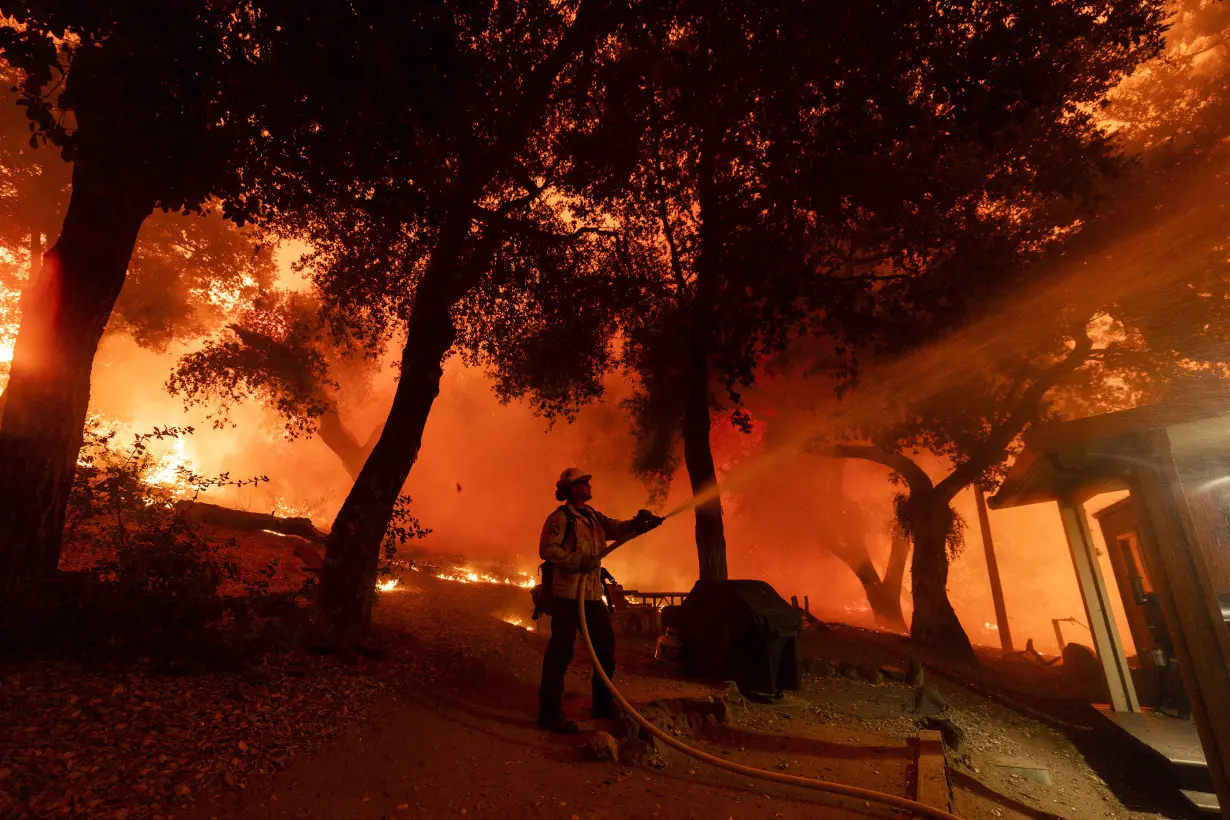TRABUCO CANYON, Calif. (AP) — Apocalyptic-looking plumes of smoke filled skies east of Los Angeles on Tuesday as firefighters battled three major wildfires that erupted amid a blistering heat wave and threatened tens of thousands of homes and other structures.
Evacuation orders were expanded Tuesday night as the fires grew and included parts of the popular ski town of Big Bear and the entire community of Wrightwood, with about 4,500 residents. Authorities implored people to leave their homes.
"There is no property that is worth risking your life for," Los Angeles County Sheriff Robert Luna said.
In recent years wildfires have regularly burned in and around Wrightwood, a picturesque mountain town 60 miles (97 kilometers) east of Los Angeles known for its 1930s cabins. Authorities expressed frustration in 2016 when only half the residents heeded orders to leave.
Janice Quick, the president of the Wrightwood Chamber of Commerce, said a friend texted to tell her that the friend's home had been consumed by fire, while another friend was watching through her ring camera as embers rained down on her home.
Quick said in the late afternoon she was eating lunch outside with friends and they were rained on by embers the size of her thumbnail that hit the table and made a clinking sound.
“I’ve never seen anything like this and I’ve been through fires before,” said Quick, who has lived in Wrightwood for 45 years.
In neighboring Orange County, firefighters used bulldozers, helicopters and planes to control a rapidly spreading blaze called the Airport Fire that started Monday and spread to about 3 square miles (8 square kilometers) in only a few hours. The blaze was ignited by a spark from heavy equipment being used by public workers, officials said.
By Tuesday night, it had charred more than 30 square miles (78 square kilometers) and was heading over mountainous terrain into neighboring Riverside County with no containment, said Orange County Fire Authority Capt. Steve Concialdi. It burned some communications towers on top of a peak, though so far officials said they did not have reports of the damage disrupting police or fire communication signals in the area.
Concialdi said the fire was burning away from homes in Orange County, but there are 36 recreational cabins in the area. He said authorities don’t yet know if the cabins were damaged or destroyed by the blaze.
Two firefighters who suffered heat-related injuries and a resident who suffered from smoke inhalation were treated at a hospital and released.
Sherri Fankhauser, her husband and her daughter set up lawn chairs and were watching helicopters make water drops on a flaming hillside a few hundred yards away from their Trabuco Canyon home on Tuesday.
They didn’t evacuate even though their street had been under a mandatory evacuation order since Monday. A neighbor did help Fankhauser's 89-year-old mother-in-law evacuate, Fankhauser said. The flames died down last night but flared up again in the morning.
“You can see fire coming over the ridge now,” Fankhauser said Tuesday afternoon. “It's getting a little scarier now."
She said she trusted the crews would get things under control and that firefighters were keeping them informed.
Meanwhile, in the San Bernardino National Forest, some 65,600 homes and buildings were under threat by the Line Fire, including those under mandatory evacuations and those under evacuation warnings, nearly double the number from the previous day.
Residents along the southern edge of Big Bear Lake were told to leave the area Tuesday night, according to the San Bernardino County Sheriff's Department. It's unclear how many people were affected in the area, which is a popular destination for anglers, bikers and hikers.
The blaze had charred more than 51 square miles (132 square kilometers) of grass and brush and blanketed the area with a thick cloud of dark smoke . The acrid air prompted several districts in the area to close schools through the end of the week because of safety concerns. Three firefighters have been injured since the blaze was reported Thursday, state fire managers said.
In Northern California, a fire measuring less than a square mile (2.6 square kilometers) that started Sunday burned at least 30 homes and commercial buildings and destroyed 40 to 50 vehicles in Clearlake City, 110 miles (117 kilometers) north of San Francisco, officials said. Roughly 4,000 people were forced to evacuate by the so-called Boyles Fire, which was about 50% contained Tuesday night.
Other major fires were burning across the West, including in Idaho, Oregon and Nevada, where about 20,000 people had to flee a blaze outside Reno. The uncontained Davis Fire burned at least one home and threatened dozens more. It originated in the Davis Creek Regional Park in the Washoe Valley and was spreading through heavy timber and brush, firefighters said.
An emergency declaration issued for Washoe County by Nevada Gov. Joe Lombardo on Sunday said about 20,000 people were evacuated from neighborhoods, businesses, parks and campgrounds.
More than 600 firefighters in the area held their own Tuesday but were bracing for worsening weather conditions Wednesday, which could see dangerously strong winds and dry conditions. The National Weather Service in Reno said it was the first time in five years and only the sixth time in history that they’ve labeled the threat as a “particularly dangerous situation.”
All off-duty firefighters in the Reno area have been ordered back to work Wednesday.
“I’ve never done that in the 12 years I’ve been chief,” Truckee Meadows Fire Chief Charles Moore said Tuesday.
___
Rodríguez reported from San Francisco.

 As California wildfires become more frequent, people will need to fireproof their homes. Here’s what it takes to do it
As California wildfires become more frequent, people will need to fireproof their homes. Here’s what it takes to do it
 Fed's Kashkari says broad-based US deportations could disrupt labor for some businesses
Fed's Kashkari says broad-based US deportations could disrupt labor for some businesses
 'Heretic' and Hugh Grant debut with $11 million, but 'Venom: The Last Dance' tops box office again
'Heretic' and Hugh Grant debut with $11 million, but 'Venom: The Last Dance' tops box office again
 Trump in phone call advised Putin not to escalate in Ukraine - Washington Post
Trump in phone call advised Putin not to escalate in Ukraine - Washington Post
 6.8 magnitude earthquake strikes off coast of eastern Cuba
6.8 magnitude earthquake strikes off coast of eastern Cuba
 The Taliban will attend a UN climate conference for the 1st time
The Taliban will attend a UN climate conference for the 1st time
 No reason not to cut rates in Dec as of now, ECB's Holzmann tells paper
No reason not to cut rates in Dec as of now, ECB's Holzmann tells paper
 Chiefs block Broncos' potential winner as time expires, hold on for 16-14 win to remain perfect
Chiefs block Broncos' potential winner as time expires, hold on for 16-14 win to remain perfect
 Judith Jamison, influential dancer and choreographer, dies at 81
Judith Jamison, influential dancer and choreographer, dies at 81
 Tennis Channel takes Jon Wertheim off the air for comment about Wimbledon champ Barbora Krejcikova
Tennis Channel takes Jon Wertheim off the air for comment about Wimbledon champ Barbora Krejcikova

